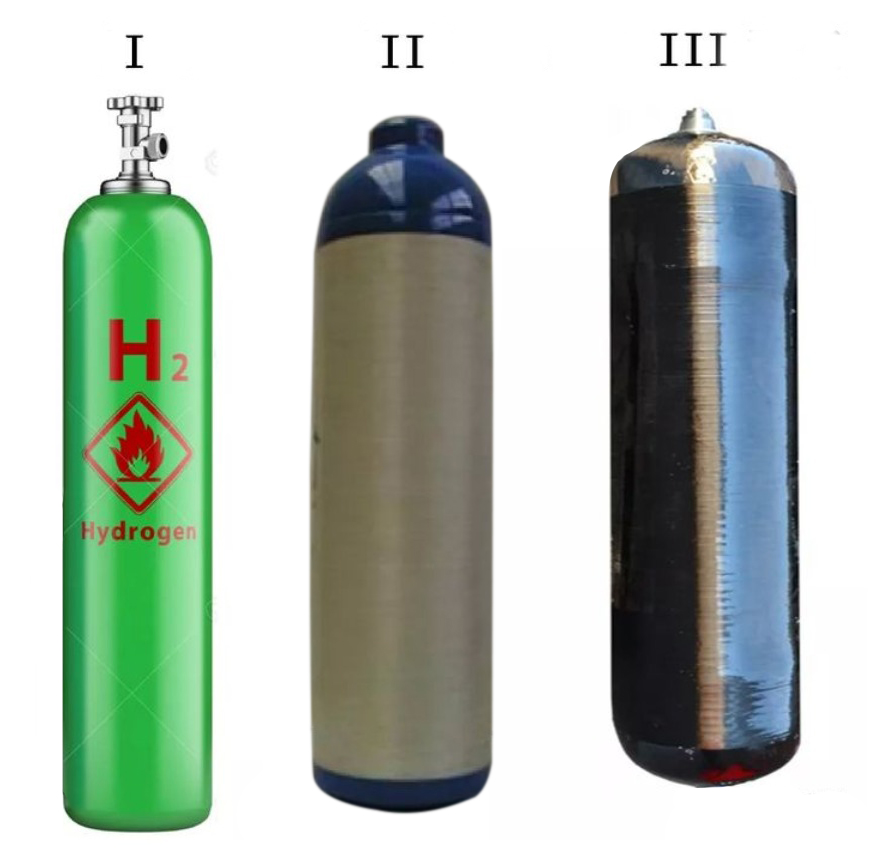What are the types of hydrogen bottles
Hydrogen bottles are often used in fuel cell applications. In articles and reports promoting the use of fuel cell vehicles, it is often mentioned that the IV bottle should be promoted. So what kind of container is a IV bottle? What about type I, II and III bottles?
Classification of hydrogen bottles
There is no corresponding information for this standard or document on the Internet, but from the limited information, it should have been defined by the U.S. Department of Energy DOE (Hydrogen Storage Classification) in 2002. In the current data, hydrogen bottles are divided into four categories, which are successively called type I, TYPE II, type III and type IV bottles. There is little difference between the four types of bottles in shape, and they are all "bottle" shaped. There is no package on the surface of type I bottle, while type II bottle generally has part of package on the surface. It is difficult to distinguish type III and IV bottles from each other in terms of their appearance, because there are parallel and cross-type packages on the surface of their bottles.
In the form of the diagram below, we can clearly see the differences between the structure and materials of these four types of hydrogen bottles.
hydrogen bottles
Type 1 bottle
That is, the metal bottle (tank) we often mention. Make a section for the whole bottle, and it can be seen that the whole bottle is composed of only one layer of material, and this layer of material is multi-purpose pressure-resistant steel. Type I bottles have the longest history, appearing between 1870 and 1880. It is the largest weight, lowest cost and simplest manufacturing process among the four types of hydrogen bottles. Generally stored gas pressures range from 150 to 300bar. Type I bottles are also used at present, but only in low pressure requirements, and mainly in fixed application.
Type II bottle
As can be seen from the diagram below, the main bottle liner is made of the same material as the type I bottle, also pressure-resistant steel, but the whole bottle body is wrapped in fiber-resin composite material. In the form of wrapping material, only hoop type is used to wrap the bottle body. This can also be seen in the schematic section of the bottle body.
Due to the composite material wrapping on the bottle body, the pressure tolerance of the bottle is generally higher than that of the I-type bottle. There is no specific upper limit, so the material and external wrapping of the bottle body can be selected to meet the demand of the upper pressure storage limit. In terms of current application scenarios, type II bottles are mostly used in the supply of fixed energy, and they still dominate.
Type III bottle
Compared with type I and II bottles, type III bottles mainly respond to the application of hydrogen in mobile equipment, which puts forward certain requirements for the lightweight of equipment, such as fuel cell vehicles. While the weight of the product has been reduced, manufacturing costs have increased compared to both the I and II bottles to ensure performance. From the outline diagram, the III bottle still uses the metal lining, but the thickness of the lining is reduced compared with the II bottle, and the bottle body is wrapped with fiber and resin composite materials. The package form uses two poles laid or spiral laid. Type III bottles can meet the pressure requirements of fuel cell vehicles, and are divided into 35MPa and 70MPa. At present, domestic fuel cell vehicle hydrogen bottle is usually relatively mature type III bottle.





 Facebook
Facebook YouTube
YouTube LinkedIn
LinkedIn Twitter
Twitter